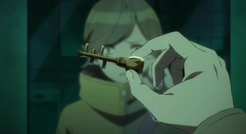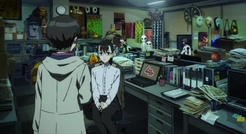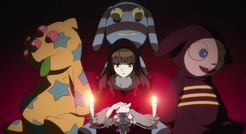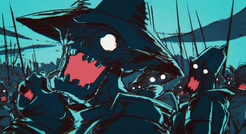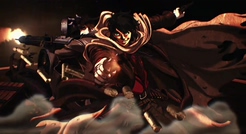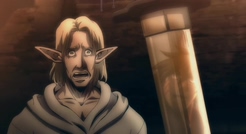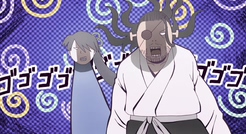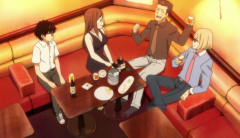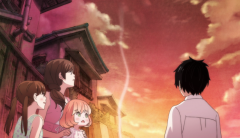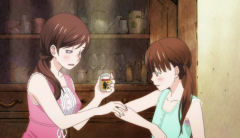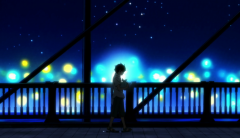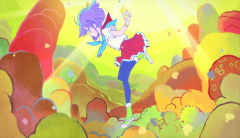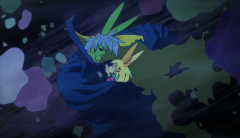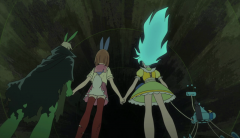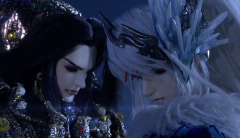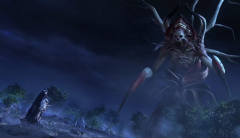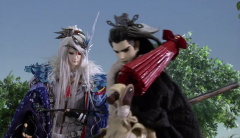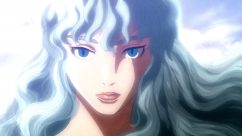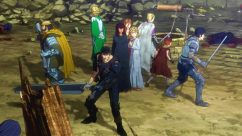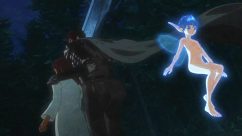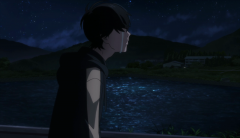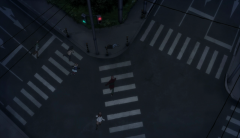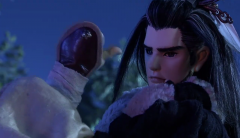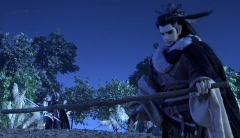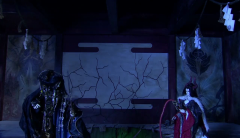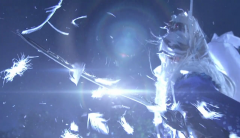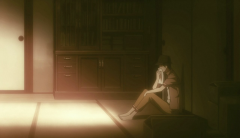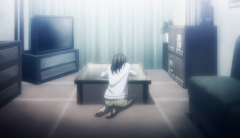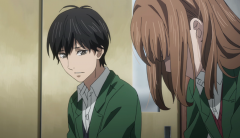After a disastrous first episode that has likely pushed away a number of viewers, Occultic;Nine decides to slow down it’s pacing to a more acceptable degree which is a good move. This does make the show much more watchable as the dialogue isn’t running off like a machine gun and we can actually take a moment to get invested in the plot and characters. However here comes another problem, namely the plot and characters. The actual story itself has some interesting points being it’s about a large cast of characters who all seem connected to the murder of an occult professor. But the way this show decides to tell this story is akin to a 5 year old on a sugar rush. It seems to be pulling inspiration from Narita’s Durarara and Baccano in that the story involves a large cast which the story switches between. However Narita’s characters were distinct enough to latch on to and he usually had his story in arcs with scenes that transitioned into each other with ease.
Occultic;Nine doesn’t have either of those things, it’s characters are visually distinctive but not personality distinctive. For one I actually confused the occult blogger with the boy detective that appeared at the start of this episode because besides one being a detective and the other not, they are basically the same character. A fast talking Otaku with short hair. Other characters have quirks but lack something to make them really stand out. For one Ryouka just seems like a less ditsy, much higher stacked version of Mayuri and by god if this…thing doesn’t make me question why I am watching this every time I see it. I am hardly a man who values realism in my anime but I have a hard time believing breasts of that size don’t snap this girl’s spine in two when she stands upright, let alone while dancing around the room. To me, too much of anything good or bad can turn something grotesque. However seeing how much fanart she has got already, perhaps my opinion is in the minority.
Generally in a TV episode there are two plots running. An A plot and a B plot. The A plot is generally the main draw and the B plot acts as less important story to give time in between acts. Occultic;Nine on the other hand has an A, B, C, D, E, F, G and H plot running in parallel and never give you time to breath. There’s the blogger who stumbled on a murder and is ordered to put out a tooth which is actually a hidden key.(Look at that screenshot up there, think that can fit in a human gum? Short answer, no. Long answer, HA! Hell no.) There’s a detective who is investigating the murder and is involved with some secret organization.(Good thing he erased the victim’s last dying message where he wrote “CODE” as if the police saw that it would surely give away…something. I mean what code are we talking about here? C++? JAVA? Python?) There’s a girl who has a business of cursing people with some demonic entity she has with her. There’s a girl who tells fortunes on the internet with daddy issues. That same girl and another girl are testing Curse girl’s abilities. There’s a guy with daddy issues. There’s another story about a girl who was so obsessed with her brother that she lived with his corpse. There is just far far too much going on here and none of it is given the time needed to really flesh it out.
It’s just a hailstorm of events thrown at the viewer without cohesion. And if that sounds like a complete narrative mess already then it only gets worse for believe or not, these events are not even thrown at you in order. Much like this series jumps between characters without warning, it also happens to jump to different times and you may not have even realised it. It’s hard enough piecing together just what is happening without having to worry about when it is happening as well and I certainly say this, for the love of god fire the director. Maybe if you hire someone who has an idea of what he is doing this mess can be salvaged but that of course would only be temporary. I know how this writer works and I know that whatever explanation for everything going on here is going to be utterly nonsensical and mind numbingly stupid. But hey, i am in this for the long run so throw whatever you got at me Occultic;Nine, you may even surprise me.


